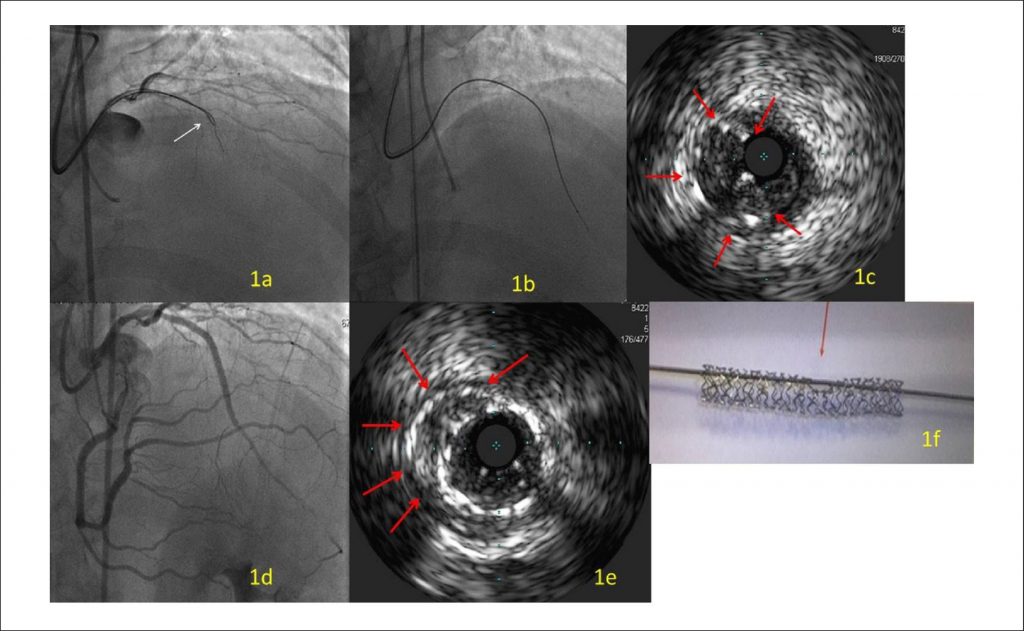Arq. Bras. Cardiol. 2017; 109(2): 178-179
Crescent Moon Image as a Peculiar Complication During Percutaneous Coronary Intervention of an In-Stent Chronic Total Occlusion
DOI: 10.5935/abc.20170073
Case
55-year-old male with history of ischemic cardiomyopathy with previous percutaneous coronary intervention (PCI) in the anterior descending coronary artery (LAD) middle segment was admitted to our hospital for chest pains. A new coronary angiogram showed in-stent chronic total occlusion (ISCTO) of LAD receiving collaterals from right coronary artery (RCA). Left circumflex (LCX) was totally occluded and RCA presented a significant mid-segment lesion. Complete percutaneous revascularization was planned. First attempt to recanalize the LAD failed because the lesion obstructed the passage of the balloon, so a second dedicated attempt was planned. Bilateral injection using radial and femoral arteries was used, and a Confianza Pro 9 (Asahi Intecc, Japan) guidewire was progressively advanced through the ISCTO () and the wire’s position in true lumen was verified by contralateral injection. Considering the lesion, which impeded the balloon’s passage, a microcatheter Tornus (Asahi Intecc, Japan) was utilized to penetrate and advance through and past the occlusion (). After balloon predilatation, intravascular ultrasound sonography (IVUS) verified the position of the wire in a very short segment into true lumen, but outside the previously implanted stent (). Several drug eluting stents (DES) were implanted and the artery was successfully recanalized, although a very distal embolization was detected (). A new IVUS examination showed partial crush of the previous stent in the shape of a crescent moon ().
[…]
352

